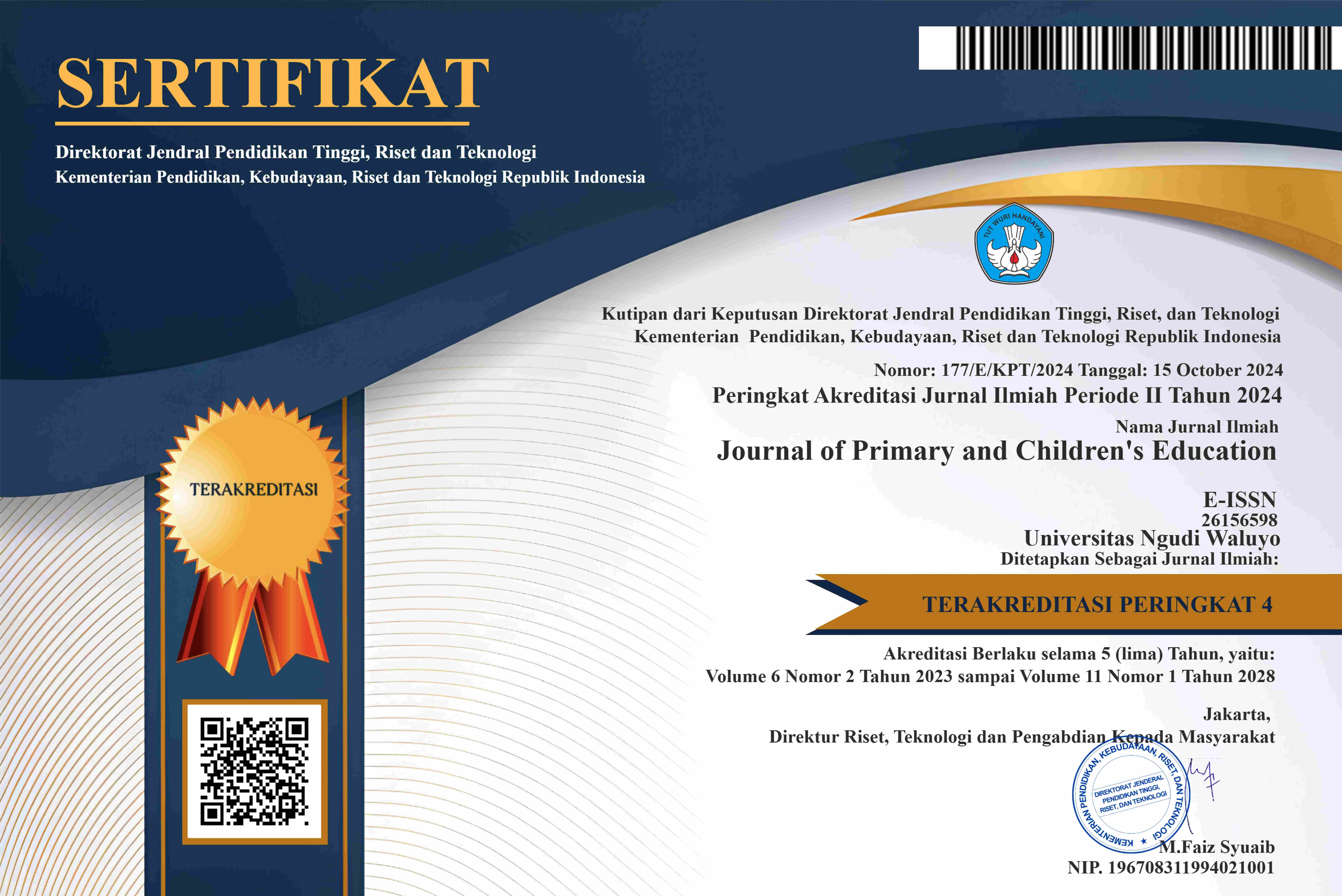PENINGKATAN HASIL BELAJAR PPKN MATERI ANALISIS PENERAPAN NILAI-NILAI PANCASILA MELALUI MODEL BLENDED LEARNING BERBANTUAN MEDIA WHATSAPP
DOI:
https://doi.org/10.35473/jnctt.v4i2.1200Abstract
The purpose of classroom action research is to determine the improvement of Civics learning outcomes for class VI C SDN Candi 01 Semarang City through the application of Blended Learning model assisted by WhatsApp media. Blended Learning combines the best of online learning, structured face-to-face activity, and real-world practice. WhatsApp is an internet-based application that makes it easy for users to communicate with the available features and the most popular social media. Based on the results of research and data analysis, it can be concluded that Whatsapp media can improve PPKN learning outcomes for analyzing the application of Pancasila values in class VI C SDN Candi 01 academic year 2020/2021.
References
Asmawadi, Andi. 2020. “Fun Learning melalui Media Whatsapp pada Pembelajaran Jarak Jauh untuk Kelas 1 Sekolah Dasarâ€. ELEMENTARY: Jurnal Inovasi Pendidikan Dasar.1(1).
Banindra Yudha, Chrisnaji dkk. Pengembangan Model Blended Learning Untuk Sekolah Dasar. Jurnal Pendidikan Dasar. 10(2). 143-156.
Bibi, Sarah., Handaru Jati. 2015. “Efektivitas Model Blended Learning terhadap Motivasi dan Tingkat Pemahaman Mahasiswa Mata Kuliah Algoritma dan Pemrogramanâ€. Jurnal Pendidikan Vokasi Vol.5 Nomor 1 Februari 2015
Husamah. 2014. Pembelajaran Bauran (Blended Learning). Jakarta: Prestasi Pustaka
Raya.
Indriani, Desy. 2019. “Pengaruh Model Blended Learning terhadap Motivasi dan Prestasi Belajar Siswa Sekolah Dasarâ€. Prosiding Seminar Nasional Fakultas Ilmu Sosial Universitas Negeri Medan. 3: 851 – 854.
Jumiatmoko. 2016. “WhatsApp Messenger Dalam Tinjauan Manfaat Dan Adabâ€. Wahana Akademika. 3 (1): 52-66.
Kompas.com.2020.https://www.kompas.com/tren/read/2020/03/12/113008565/timeline-wabah-virus-corona-terdeteksi-pada-desember-2019-hingga-jadi?page=all. diakses 19 April 2020.
Neumeier, Petra. 2005. A Closer Look At Blended Learning – Parameters for Designing
a Blended Learning Environment for Language Teaching and Learning. ReCALL, 17(2), 163-178.
Rizki, Galuh Alif Fahmi., dan Abdul Gafur Daniamiseno. 2019. “Pengembangan Model Blended Learning dengan Pendekatan Cooperative Mata Kuliah Ilmu Lingkunganâ€. Jurnal Inovasi Teknologi Pendidikan. 6(1): 42-55.
Sandi, Gede. 2012. “Pengaruh Blended Learning terhadap Hasil Belajar Kimia ditinjau dari Kemandirian Siswaâ€. Jurnal Pendidikan dan Pengajaran. 45(3): 241-251.
Syarif , Izuddin . 2012. “Pengaruh Model Blended Learning terhadap Motivasi dan Prestasi Belajar Siswa SMKâ€. Jurnal Pendidikan Vokasi. 2(2).
Widyaningsih, Octaviany., Chrisnaji Banindra Yudha., Devita Cahyani Nugraheny. “Pengembangan Model Blended Learning untuk Sekolah Dasarâ€. JPD: Jurnal Pendidikan Dasar.143-156
Published
How to Cite
Issue
Section
License
Copyright notice:
- Authors retain copyright and grant the journal right of first publication with the work simultaneously licensed under Creative Commons Attribution License that allows others to share the work with an acknowledgement of the work's authorship and initial publication in this journal.
- Authors are able to enter into separate, additional contractual arrangements for the non-exclusive distribution of the journal's published version of the work (e.g., post it to an institutional repository or publish it in a book), with an acknowledgement of its initial publication in this journal.
- Authors are permitted and encouraged to post their work online (e.g., in institutional repositories or on their website) prior to and during the submission process, as it can lead to productive exchanges, as well as earlier and greater citation of published work (The Effect of Open Access)







